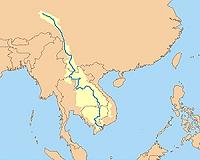 |
Tokyo (AFP) April 10, 2011 Japan's economy, the world's third-largest, has been in trouble for nearly a generation, but nothing prepared it for the brutal impact of power shortages following the March 11 disaster. The 9.0-magnitude earthquake and subsequent tsunami knocked out a sizable portion of the nation's electricity supply, creating a ripple effect that has spread throughout the economy and leaving Japan with a new kind of problem. "Over the past twenty years, the primary cause of economic downturns has been deficient aggregate demand," BNP Paribas chief economist Ryutaro Kono said in a research note. "The economic contraction expected now, however, will be largely due to severe supply constraints." Put simply, the main challenge now facing Japan is getting companies to produce more, rather than cajoling consumers to spend. Central to that conundrum lies the power company most severely hit by the disaster, Tokyo Electric Power Co. (TEPCO) -- a key cog in Japan's vast economic machine. TEPCO is battling an atomic emergency at its Fukushima Daiichi plant where engineers are working to cool overheating nuclear reactors leaking radiation into the atmosphere. By paralysing sections of TEPCO, the twin disasters have shut down major parts of the economy, according to Hiroshi Watanabe, senior economist at Daiwa Institute of Research. "The area covered by TEPCO will experience roughly 20-percent electricity shortage this summer. This will put a significant downward pressure on the economy," he told AFP. "The economy will go through a stagnant period. We believe negative growth will continue until the July-September quarter." The most serious effect will be felt among electricity-gulping sectors such as paper, cement and metal production, he said. One of the world's biggest power companies, before the quake TEPCO's production capacity stood at 64.5 million kilowatts. But the quake and tsunami knocked it down to 31.0 million kw. The utility has used retired thermal and other plants to bring the total capacity up to around 40.0 million kilowatts. It hopes to boost the total capacity to 46.5 million kw by the end of July. But problems may sweep across the economy. If the auto sector experiences significant slowdown, that could spill over to other sectors, such as machinery, according to Watanabe. And in a heavily interdependent economy such as Japan's, no region or industry will avoid the shock, not just from reduced power supply, but from a decline in available parts. "The shutdown of factory activity in Kanto and Tohoku (regions) has greatly disrupted the supply chains for production activity in other parts of the country," said Kono of BNP Paribas. Sharp Corp. Friday said it was reducing its liquid crystal display output following the earthquake. "We are adjusting the production flexibly since the earthquake in Japan is affecting the supply and demand for LCDs for televisions," a company spokeswoman told Dow Jones Newswires. "We would like to determine the reduction of LCD production carefully looking at the length of the earthquake's impact." Shortages have occurred in unexpected places -- fears over water contamination have pushed up demand for bottled mineral water, leaving the beverage industry scrambling for caps for plastic bottles. "We haven't been able to get the amount (of caps) we want. This is now having a negative impact on our efforts to boost production," an unnamed official of a major drinks maker told the Yomiuri Shimbun. Under pressure to prevent the economy seizing up, Japan's government said Friday it will set a target for companies to reduce electricity consumption by up to 25 percent, depending on the size of the business. The move is designed to help the country avert a programme of rolling blackouts which will be needed to offset expected power shortages during the summer when millions of air conditioners will sap scare resources. But the measure has not convinced economists that problems ahead have been surmounted. "It is hard to say when the power bottleneck affecting the Kanto region, which accounts for 40 percent of the Japanese economy, will be resolved," said Kono. "The shortage will likely become acute again from mid-June, as demand picks up alongside the onset of summer temperatures."
Share This Article With Planet Earth
Related Links
 Mekong Countries To Convene Additional Meeting On Xayaburi Project
Mekong Countries To Convene Additional Meeting On Xayaburi ProjectPreah Sihanouk Province, Cambodia (SPX) Apr 08, 2011 As the deadline for reaching a decision comes closer, four Lower Mekong Basin Countries have agreed to convene a special session on the prior consultation process for the proposed Xayaburi mainstream hydropower development project, before determining how they should proceed with the proposal. The countries, Cambodia, Lao PDR, Thailand and Viet Nam, reached this decision at the 33rd Mekong ... read more |
|
| The content herein, unless otherwise known to be public domain, are Copyright 1995-2010 - SpaceDaily. AFP and UPI Wire Stories are copyright Agence France-Presse and United Press International. ESA Portal Reports are copyright European Space Agency. All NASA sourced material is public domain. Additional copyrights may apply in whole or part to other bona fide parties. Advertising does not imply endorsement,agreement or approval of any opinions, statements or information provided by SpaceDaily on any Web page published or hosted by SpaceDaily. Privacy Statement |